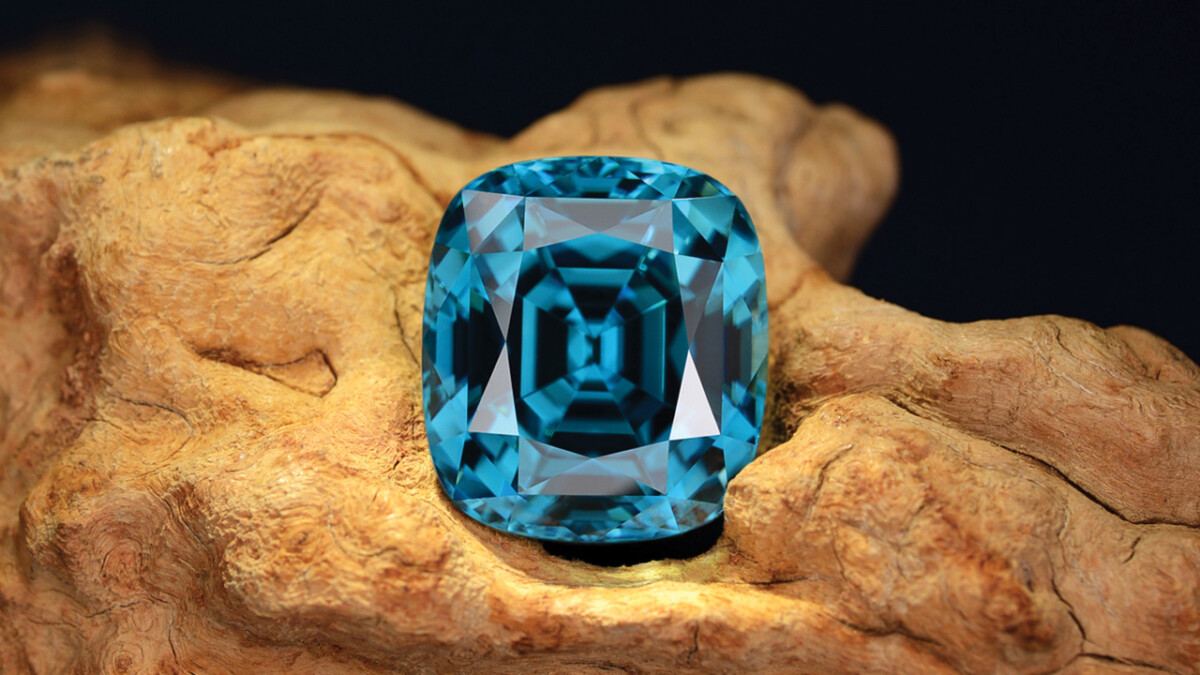Zircon is a beautiful natural gemstone that comes in a wide array of colors and possesses a remarkable optical phenomenon known as birefringence, or double refraction. But despite its allure, zircon is possibly the most misunderstood and underrated gem, because it is often confused with the manmade material cubic zirconia.
“I blame the name. To be clear, zircons are naturally occurring, and cubic zirconias are made in labs,” says designer Lauren Harwell Godfrey, founder of jewelry brand Harwell Godfrey, who uses zircon in her bespoke pieces.
“It would help improve its popularity in the commercial market if there were more effort put into educating consumers about its special properties,” comments Vram Minassian, founder of Los Angeles-based jeweler Vram.
Virtually all zircons are heat-treated to enhance or change their hues, which range from serene, saturated blues to greens and vibrant yellows, as well as brown and red shades. There’s even a colorless option. This color versatility, combined with the stone’s fire and affordability, makes zircon an appealing choice for both designers and consumers seeking a distinctive aesthetic appeal.

Paula Crevoshay Asherah ring with a 19.84-carat blue zircon. (Paula Crevoshay)
A jeweler’s delight
Zircon’s underuse in jewelry design means it can be a distinguishing feature for those jewelers who do incorporate it.
The gem’s brilliant flash and intense hues lend themselves well to Harwell Godfrey’s ebullient and colorful arrangements. “I’ve used a really juicy heart shape and a big beautiful cushion in the blue color — both for rings — but I am currently loving brown zircon and want to use it in a cocktail ring,” says the designer. “I am obsessed with the blue variety and its turquoise hue. The only other stone that comes close to that is Paraiba tourmaline, and they are much more expensive.”
Minassian uses zircon “mainly because of the incredible intensity and variety of color, the dispersion, and the durability,” he says. He capitalizes on its earthy autumnal shades in his Oak Chrona earrings, which feature an array of round brilliant-cut stones in brown and orange. He also includes elements like inverted pear-shaped rose cuts to create eye-catching focal points.

Vram Oak ring with a natural orange zircon and sapphires. (Vram)
It’s not easy finding green
“Green is the rarest color of zircon,” according to jewelry designer Paula Crevoshay, who has nonetheless managed to acquire two large natural-color green zircon cabochons for her creations. One is the 32.83-carat specimen that adorns her Green Tara cuff. The other is a 43.79-carat stone from Ratnapura, Sri Lanka, which she surrounded with four green tourmalines in her George pendant — the first piece of zircon jewelry to join the Smithsonian Institution’s National Gem Collection.
“Large green zircons are so rare that they are almost impossible to find, whereas blue and white zircons are heat-treated and are readily available,” she says. “Therefore, I use [the latter two] whenever I feel they will contribute to my composition.” Crevoshay’s works feature a whole range of sizes, from large center stones to smaller accent stones in pavé.
Cut out for success
Rounds and ovals make up the majority of the zircon collection at gem-cutting firm Nomad’s, says regional manager Josh Saltzman, as these cuts showcase the stones’ brilliance and dispersion very well. Cushion, hexagon and emerald cuts have also been popular, he adds.
Mohsin Mansoori of gem dealer Mohra India owns a small artisanal zircon mine in Cambodia’s Ratanakiri province. The US and European markets tend to seek “loupe-clean stones, Asscher and cushion cuts,” he states, while the Indian market prefers ovals and more included stones.
Blue is the color of choice for 90% of buyers, with some opting for brown and white, he says. “High-quality blue zircon is very popular in Europe and Japan. However, production has been down more than 70% in the last four years.”
Finding clean top colors is still a challenge, Saltzman reports. “For blue zircon, we look for a bright, pure blue color without unpleasant undertones and [with an] even color, as color zoning can be an issue with zircon.”
The right price
The accessible price point of zircon can make it more popular than other stones with similar colors. Even with prices rising, they “are still much lower than a saturated blue aquamarine or indicolite tourmaline, and of course much less than sapphire or diamond (for the colorless stones),” says Josh Saltzman of Nomad’s.
Wholesale, the blue variety tends to sell for more than other colors, according to Mohsin Mansoori of Mohra India. A top 10-carat blue zircon can cost between $150 and $200 per carat, he says, with 20-carat stones going for $300 to $400 a carat and 50-carat specimens from $450 to $750 per carat.
Fine stones over 15 carats are getting more difficult to source, Saltzman reports. “As with pretty much everything, prices will continue to increase as the costs of production increase worldwide.” He expects demand for good-quality material to remain strong, “as it fills a niche of lovely blue colors at an affordable price point.”

An 11.04-carat blue zircon from Nomad’s. (Nomad’s)
Main image: A 39.97-carat blue zircon. (Nomad’s)



